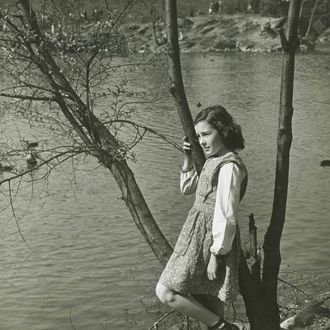
Here’s a weird thought: There’s a good chance that at least a few of your childhood “memories” never actually happened. You might think you remember your 3rd birthday party when what you really remember are the pictures, or you might believe you have a very vivid memory from elementary school that in reality happened to your brother.
Or, you might even be lifting your memories from the books and movies you loved as a child. Recently, the writer Elizabeth McCracken realized that’s exactly what she’d done, upon rereading the Ramona Quimby books by Beverly Cleary. “Have had reason to confront this upsetting fact: 87% of my kindergarten memories are in fact plagiarized from Ramona the Pest,” she tweeted last month.
So why does this happen? Why do our brains seem to be so susceptible to false childhood memories? Elizabeth Loftus, a cognitive scientist at the University of California, Irvine, has done extensive research on the malleability of memory, particularly in children and false memories from childhood. “We pick up information from all sorts of places and times and use it to ‘create’ our memories,” Loftus said in an email to Science of Us.
Loftus is the author of a well-known study from the mid-1990s in which she successfully “implanted” a false memory in college students about a time they got lost in the mall as a kid, even though they never had (Loftus and her colleagues checked with the students’ families). But simply by asking leading questions about the supposed memory, the researchers got several students to tell them that it had really happened. And the false memory doesn’t even have to be very realistic; in a later study, Loftus and her colleagues were able to successfully implant false memories in college students of going to Disneyland as children and meeting Bugs Bunny — which is not even a Disney character.
Scientists aren’t exactly sure why it’s so easy to implant fake memories, childhood or otherwise, said Brock Kirwan, a neuroscientist who studies memory at Brigham Young University. “We know something about the circumstances that make it easier, but I don’t think we know what’s going on in the brain exactly,” he said. But brain scan studies have shown that the neural activity for false memories in adults look “pretty much like” the activity for a real memory, Kirwan explained.
To some extent, all of our memories — even the real ones — aren’t exact recordings of what happened, “which is good and bad,” Kirwan said. “It’s good in that it’s really useless to have a literal playback of what happened in the past — there’s too much trivial detail that we don’t need. We just need the main, relevant points to make better decisions in the future. It’s bad in that it leaves us open to mis-remember or to confabulate our memories, to mix them up.” We saw a darker example of this back in the 1980s and 1990s, in a massive child-molestation “scandal” that wasn’t. Investigators asked very young children leading questions about being molested at day care, causing many of the kids to agree that, yes, they were molested —though later evidence showed that this wasn’t true.
But why is it so easy in particular to implant false childhood memories in people’s minds? Kirwan explained, “If the original memory trace has decayed enough, then a sketchy false memory is virtually indistinguishable from the real thing,” he said.” That might make it easier to implant false memories for older — read: childhood —events.




